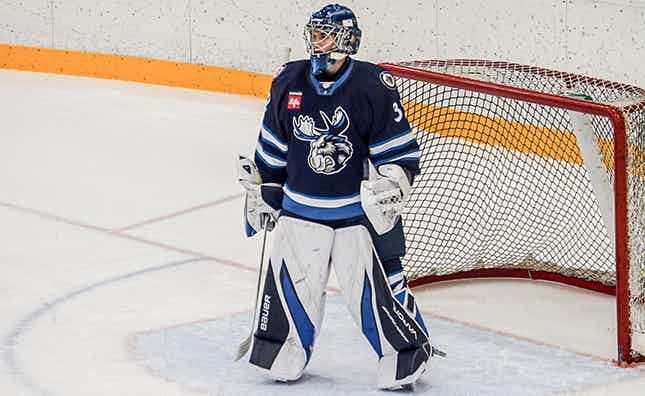Jets split up Antropov/Burmistrov line vs. Tampa
By Cam Charron
12 years agoClaude Noel shifted his lines around at the start of last game, presumably after Winnipeg was running on a 5-game losing streak. The results came with some success, as the Jets turned in arguably their best performance of the season Monday night against Tampa Bay, defeating them 5-2 and outshooting them 36-21 at even strength.
“I deal with efficiency. How do we maximize efficiency?” Claude Noel said after that game. “My job is not that difficult.”
No doubt, it’s a risky maneuvre and certainly one that could easily backfire, splitting up Winnipeg’s top combination of Nikolai Antropov and Alexander Burmistrov, who have, with Kyle Wellwood, done very well for themselves. Antropov had a score-tied Corsi percentage of of 59% after the Tampa Bay game, meaning that, when he was on the ice, just under 60% of shot attempts were directed at the opposition’s net. Burmistrov wasn’t all that far behind, at 54.3% behind Kyle Wellwood, also at 58.9%.
When a line combination is doing well, it’s usually convention to keep them together. Arguments in favour of line or team chemistry like to point out that certain players tend to play better with specific linemates, based on playing style or general trust in that specific player over another.
But that wasn’t really for Noel after a 5-game losing streak. It’s nice to see he won’t refuse to take a chance. Antropov and Burmistrov were split up, with Burmistrov being moved to a combination with Bryan Little and Evander Kane. The trio clicked twice in the first period alone, with Burmistrov assisting on a wicked snap-shot goal by Kane. Andrew Ladd would score later in the game on his new line with Kyle Wellwood and centred by Antropov.
The success with Burmistrov and Antropov wasn’t necessarily anything related to offense. Although the first 16 games of the had the “first” line of Kane-Ladd-Little combine for 11 goals while the “second” line with Burmistrov-Antropov-Wellwood had 12, the first line out-shot the second 134-81. The second line had the benefit of some better bounces, and possibly more opportunities to play with top offensive defenseman Dustin Byfuglien. Until the Tampa game, the second line was shooting the puck in the net at a rate of 14.8% vs. 8.2% for the first line, so there was bound to be a bit of regression for both.
Realistically, it was defense where the discrepancy between the two lines was evident. Simply put, Antropov and Burmistrov are wizards at getting the puck moving the right direction, a factor evident both to my eyes and to the stat sheet. Despite ice-time generally being pretty equal between the two lines, the second line was about a half shot on net better defensively per game, which doesn’t seem like much, but that can be worth an extra win at the end of the year.
It’s easy for a coach or a fan to fall in love with a one or two line combinations, but looking at the success of individual teams such as Chicago and Vancouver who routinely change up their combinations to maximize efficiency, maybe it isn’t chemistry that allows certain lines in hockey to succeed, but rather good players. Antropov, Kane, Burmistrov and Ladd are all pretty good hockey players when it comes down to it, so splitting the two best defensive players and the two best offensive ones helps the whole group, rather than containing all the talent to one side.
All six players against Tampa Bay combined for 15 shots and two goals, so it’s a very good start for the new combination. Looking ahead to Washington, however, they are a much tougher opponent than the Lightning, and a better test of Coach Noel’s new-found efficiency.
Recent articles from Cam Charron





